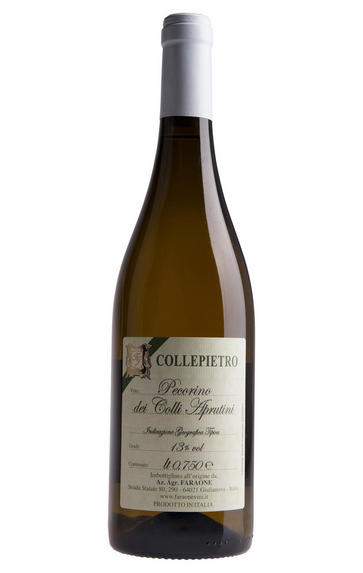
2020 Pecorino dei Colli Aprutini, Collepietro, Faraone, Abruzzo, Italy
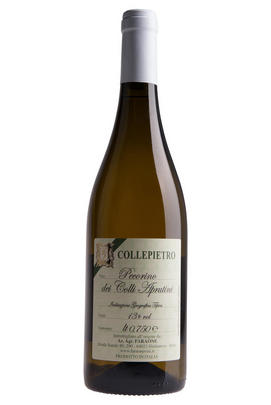
About this WINE
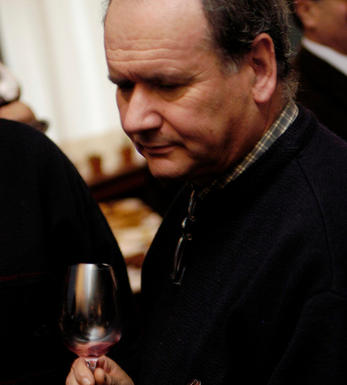
Faraone, Abruzzo
The Faraone family produces traditional Montepulciano d’Abruzzo wines. Their 9ha property is now focused on the new ‘Collepietro’ vineyard at Mosciano Sant’Angelo in the Colline Teramane DOCG zone of Abruzzo, some 10 miles from the Adriatic.
Faraone’s story dates back to 1916, and particularly to the 1930s when Montepulciano, Sangiovese and Passerina were first planted; bottling started in 1970. Giovanni Faraone makes the wine, aided by his wife Paola & sons Alfonso & Federico; the latter an oenologist who’s worked in France and New Zealand before taking up a post in Umbria. They also make a fine Trebbiano d’Abruzzo, Passerina and Pecorino.
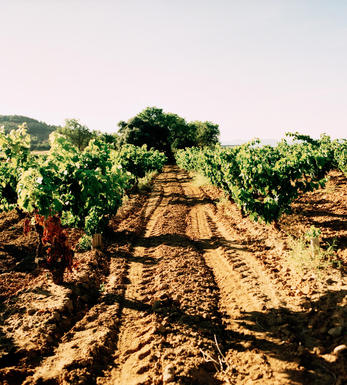
Abruzzo
Abruzzi (Abruzzo) is an eastern Italian province. Although it remains insignificant in terms of the fine wine market, it is important quantitatively, drawing most of its wine production from the Montepulciano d'Abruzzo grape.
Since 2003 there’s been a rash of new, grape growers-turned bottlers, spurred on by the region’s first DOCG Montepulciano d’Abruzzo Colline Teramane, but it’s clear that many lack the knowhow/heritage to do this professionally or they’re hiring in expensive consultants to fast-forward/pay off the bank loan, often ending up with boringly international, overly technical wines (while still keeping a large foot in the bulk market).
There is a definite move back to autochthonous grapes as producers grapple with climate change, believing, as others in Italy, that these grapes are better equipped to deal with the meteorological extremes. According to Valentini, the traditional high tendone/pergola abruzzese form of trellising seems better placed to cope with these hotter climes, shielding the fruit and supporting acidities (echoed in Valpolicella by Monte dei Ragni).
Black Montepulciano d’Abruzzo (aka Cordisco) is a ‘noble’ grape with a history back to 1793, whose origins lie in the Valle Peligna of the Apennines, to the town of Sulmona. Purple coloured, packed with flesh, low-medium tannins but inclined to give reduced gamey wines it’s the workhorse of the bulk wine industry, distributed as blending wine everywhere in Italy (and Europe?); the DOC can be blended with 15% other abruzzese grapes.
White Trebbiano d’Abruzzo dates back to 16th century but its identity is frequently confused with Trebbiano di Toscana, Trebbiano di Romagna and Trebbiano di Soave! DOC allows blending with 15% local white varieties (e.g. Chardonnay, Fiano, Bombino – from Puglia!) Mostly overcropped to give insipid ‘sweet water’ wines of low alcohol, light body, grassy almond notes, yet potentially very good if treated with respect, without irrigation and on VSP trellising.
Autochthonous white Passerina, Pecorino, Cococciola varieties have become fashionable, giving wines with more obvious personality at high yields (than Trebbiano). Cerasuolo d’Abruzzo rosato is making a comeback too. From being the wine the pescatori (fishermen) it has since become a more serious proposition, probably due to its production from salasso/saignee/bleeding the MdA vats giving wines with greater body and abv%. It may prove to be the perfect ‘rosato’ in future, ideal wine style for any Asian dish.
David Berry Green, Wine Buyer
Recomended Producers: Col del Mondo, Cirelli, Faraone, Valentini
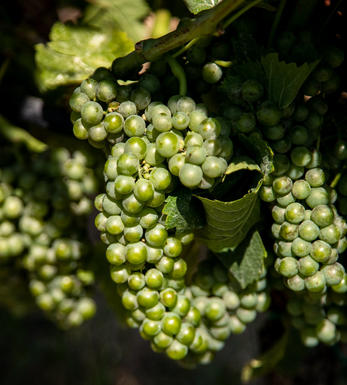
Pecorino
Pecorino is a white wine grape variety that is native to the Marches and Abruzzo regions of central Italy. It is believed to have originated in the Marches region, where it has been cultivated for centuries. The name "Pecorino" is derived from the Italian word for sheep, "Pecora," because the grape clusters are said to resemble a sheep's head.
Pecorino is known for its high acidity and aromatic profile, which often includes notes of citrus, green apple, and floral aromas. It is typically made into dry, still white wines that are crisp and refreshing. Pecorino wines are often compared to Sauvignon Blanc or Vermentino due to their similar characteristics.
The grape variety was nearly extinct by the mid-20th century due to low yields and disease susceptibility. However, in the late 20th century, there was a resurgence of interest in indigenous Italian grape varieties, and Pecorino was one of the varieties that benefited from this renewed interest. Today, Pecorino is experiencing a revival, and it is increasingly being planted in other regions of Italy, and in other countries such as Australia and the United States.
Pecorino wines are typically enjoyed young and are best paired with seafood, poultry, and light pasta dishes. They are also a good match for cheeses such as Pecorino (which shares its name with the grape), goat cheese, and fresh mozzarella.


Buying options
Add to wishlist
Description
This is a blend of Federico’s two vineyards: one, a hilltop site with light sandy soils, gives aromatics; the other, on lower, cooler clay soils, gives fruit depth and structure. A night of skin contact adds complexity, followed by a long temperature-controlled fermentation in steel tank, using wild yeasts. The wine spends six months on its fine lees before release, giving more weight and shape to the palate. The nose offers peach, green mango, lemon pith and saffron. The palate is tantalisingly tropical and herbal, with fresh, mineral grip. This cries out for crudo di mare. Drink now to 2025.
Davy Zyw, Wine Buyer, Berry Bros. & Rudd (Jul 2021)
wine at a glance
Delivery and quality guarantee